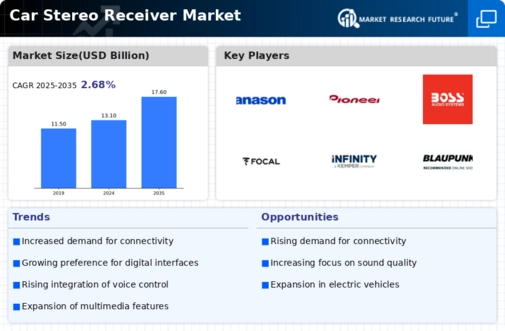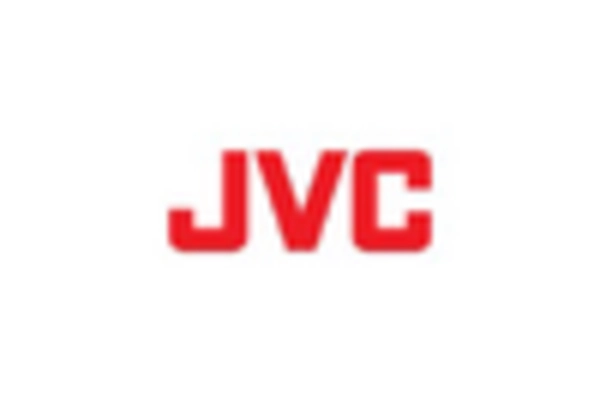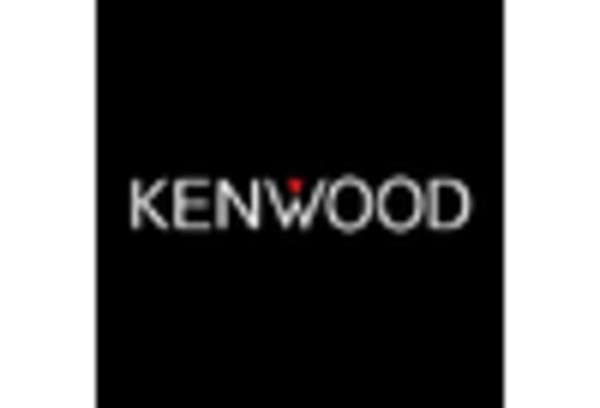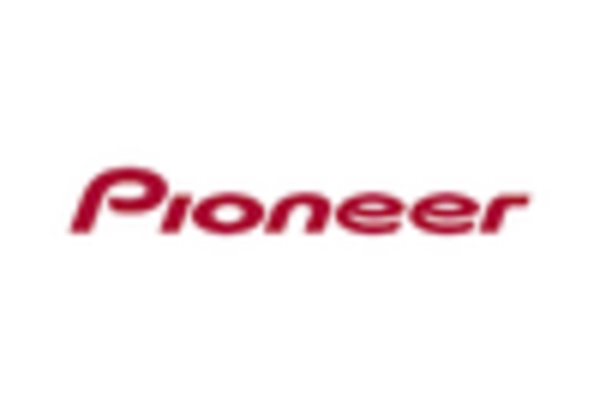Shift Towards User-Centric Designs
The Car Stereo Receiver Market is witnessing a shift towards user-centric designs that prioritize ease of use and functionality. As consumers become more tech-savvy, they demand intuitive interfaces and customizable options in their car audio systems. This trend is evident in the increasing popularity of touchscreen displays and voice control features, which enhance user interaction. Market data indicates that user-friendly designs can lead to a 15% increase in customer satisfaction, thereby influencing purchasing decisions. Manufacturers are responding by developing receivers that not only meet aesthetic preferences but also offer practical functionalities. This focus on user-centric design is expected to play a crucial role in shaping the future of the Car Stereo Receiver Market.
Integration of Connectivity Features
The Car Stereo Receiver Market is significantly influenced by the integration of connectivity features. As consumers increasingly rely on smartphones and other devices for entertainment, the demand for receivers that offer seamless connectivity options rises. Features such as Bluetooth, Apple CarPlay, and Android Auto have become essential for modern car audio systems. Market data suggests that nearly 70% of new car models are equipped with some form of smartphone integration, highlighting the necessity for car stereo receivers to adapt accordingly. This trend not only enhances user experience but also drives sales, as consumers prioritize receivers that facilitate easy access to their digital content. The ongoing evolution of connectivity technologies is likely to further shape the Car Stereo Receiver Market in the coming years.
Growth of Electric and Hybrid Vehicles
The Car Stereo Receiver Market is experiencing growth driven by the rise of electric and hybrid vehicles. As these vehicles become more prevalent, there is a corresponding demand for advanced audio systems that complement their modern features. Electric and hybrid vehicles often come equipped with sophisticated infotainment systems, creating opportunities for car stereo manufacturers to innovate. Market data suggests that the electric vehicle segment is projected to grow at a compound annual growth rate of over 20% in the next five years, indicating a substantial market opportunity. This trend encourages manufacturers to develop receivers that integrate seamlessly with the unique characteristics of electric and hybrid vehicles, thereby enhancing the overall driving experience. The Car Stereo Receiver Market is likely to benefit from this shift towards sustainable transportation.
Rising Demand for Enhanced Audio Quality
The Car Stereo Receiver Market experiences a notable surge in demand for enhanced audio quality. Consumers increasingly seek superior sound experiences, prompting manufacturers to innovate and integrate advanced audio technologies. The proliferation of high-resolution audio formats and the growing popularity of lossless streaming services contribute to this trend. As a result, the market witnesses a shift towards receivers that support high-fidelity audio playback, including formats such as FLAC and DSD. This demand for premium audio quality is reflected in market data, indicating a projected growth rate of approximately 6% annually over the next five years. Consequently, manufacturers are compelled to invest in research and development to meet consumer expectations, thereby driving the Car Stereo Receiver Market forward.
Increasing Popularity of In-Car Entertainment Systems
The Car Stereo Receiver Market is significantly impacted by the increasing popularity of in-car entertainment systems. As consumers seek to enhance their driving experience, the demand for multifunctional receivers that offer entertainment options beyond traditional radio rises. Features such as streaming services, video playback, and gaming capabilities are becoming more common in car audio systems. Market data indicates that the in-car entertainment segment is expected to grow by approximately 8% annually, driven by consumer preferences for diverse entertainment options during travel. This trend compels manufacturers to innovate and expand their product offerings, ensuring that car stereo receivers remain competitive in a rapidly evolving market. The Car Stereo Receiver Market is thus poised for growth as it adapts to changing consumer demands.

















Leave a Comment